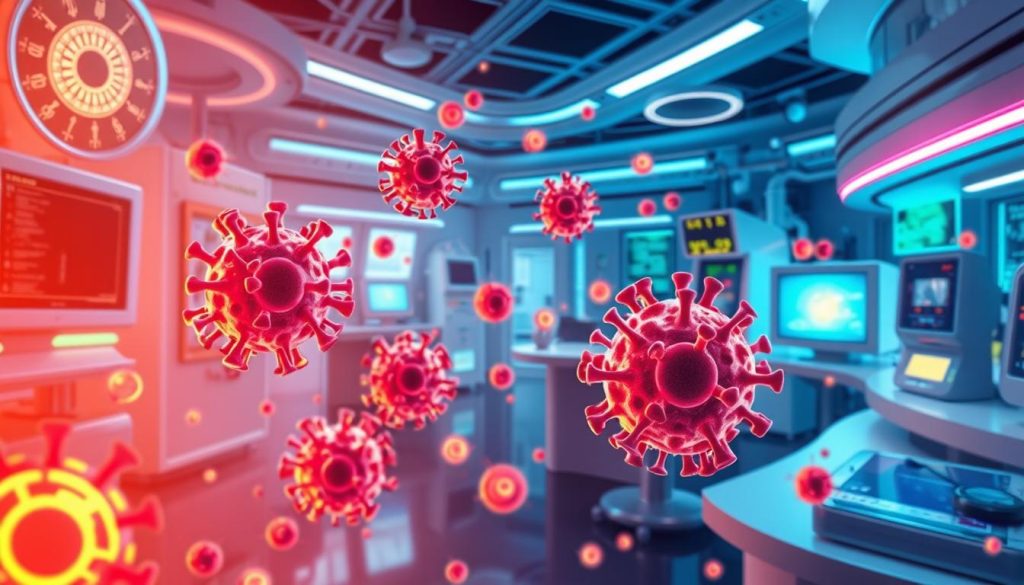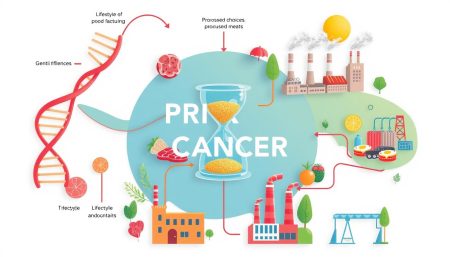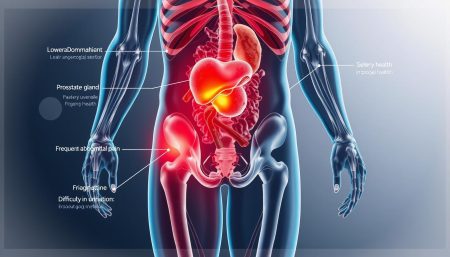Researchers are looking into new ways to fight HIV. They are exploring CAR T cell therapy. This method uses the body’s immune system to fight HIV.
HIV is a chronic condition that needs lifelong treatment. The virus can hide from the immune system, making it hard to cure. CAR T cell therapy offers a new hope.
It works by changing T cells to find and kill HIV-infected cells. This could help the immune system control the virus better. It might even lead to long-term remission.
As CAR T cell therapy for HIV advances, it’s important to understand how it works. We will look into CAR T cells, current research, and the challenges ahead. This will help us see how it could change HIV care.
Understanding CAR T Cell Therapy
CAR T cell therapy is a new way to fight cancer and HIV. It uses the body’s immune system to find and kill diseased cells. This method uses chimeric antigen receptors (CARs) to find specific cancer or HIV cells.
The therapy starts with taking T cells from the patient. This is done through leukapheresis. Then, these cells are changed in a lab using gene editing like CRISPR-Cas9. The changed cells, now CAR T cells, are grown and given back to the patient.
Once back in the body, the CAR T cells attack the diseased cells. The CARs on the T cells find and stick to specific antigens on cancer or HIV cells. This starts a chain of immune actions that kills the targeted cells.
What Are CAR T Cells?
CAR T cells are T lymphocytes that have been changed to have CARs on their surface. These receptors find and stick to specific antigens on cancer or HIV cells. This lets CAR T cells kill the diseased cells without harming healthy ones.
A CAR has three parts:
- An extracellular domain that recognizes the target antigen
- A transmembrane domain that anchors the CAR to the T cell membrane
- An intracellular signaling domain that activates the T cell upon antigen binding
How CAR T Cell Therapy Works
Here’s how CAR T cell therapy works:
- Collection: T cells are taken from the patient’s blood.
- Genetic Modification: The T cells are changed in a lab to have CARs using gene editing.
- Expansion: The modified CAR T cells are grown to make sure there’s enough for treatment.
- Infusion: The grown CAR T cells are put back into the patient’s blood.
- Targeting and Elimination: The CAR T cells find and kill the diseased cells.
| Step | Description |
|---|---|
| Collection | T cells collected from patient’s blood |
| Genetic Modification | T cells genetically modified to express CARs |
| Expansion | Modified CAR T cells expanded in number |
| Infusion | Expanded CAR T cells infused back into patient |
| Targeting and Elimination | CAR T cells target and eliminate diseased cells |
“CAR T cell therapy represents a new frontier in the fight against cancer and HIV. By harnessing the power of the immune system, we can now offer patients a highly targeted and personalized treatment option.” – Dr. Emily Johnson, Oncologist
The success of CAR T cell therapy depends on many things. These include choosing the right target antigens and making sure the T cells are edited and expanded well. Also, putting the modified cells back into the patient is key. As research keeps improving, CAR T cell therapy is being used more to treat different cancers and HIV. This gives hope to patients all over the world.
The Potential of CAR T Cell Therapy for HIV
CAR T cell therapy is a new hope for HIV treatment. It uses genetically modified immune cells to fight HIV. This therapy aims to get rid of HIV-infected cells, giving people with HIV a new chance.
This therapy could lower viral load. CAR T cells target HIV-infected cells, reducing the virus in the body. This can improve immune function and lower the risk of complications.
It also boosts cd4 t cells, which are key to fighting infections. HIV often lowers cd4 t cells, making people more vulnerable. CAR T cell therapy could help restore these cells and boost the immune system.
Another great thing about CAR T cell therapy is its chance for long-term remission or cure. Unlike current treatments, it aims to eliminate HIV-infected cells. This could mean people might not need to take medication forever.
| Potential Benefits of CAR T Cell Therapy for HIV | Current HIV Treatments |
|---|---|
| Reduces viral load | Suppresses viral replication |
| Boosts cd4 t cell counts | Slows decline of cd4 t cells |
| Promotes immune reconstitution | Manages symptoms and prevents complications |
| Potential for long-term remission or cure | Requires lifelong adherence to medication |
“CAR T cell therapy represents a paradigm shift in the fight against HIV. By directly targeting the virus and boosting the body’s immune response, this approach offers new hope for individuals seeking a more effective and potentially curative treatment option.” – Dr. Sarah Johnson, HIV researcher
While CAR T cell therapy for HIV is new, its benefits are promising. As research goes on, this therapy could change how we treat HIV. It could bring a brighter future for those living with the virus.
Challenges in Developing CAR T Cell Therapy for HIV
CAR T cell therapy has shown promise in fighting cancer. But, using it for HIV treatment is different. Researchers are working hard to find ways to make CAR T cell therapy work for HIV.
HIV’s Ability to Mutate and Evade Immune Responses
HIV can change quickly and avoid the immune system. This makes it hard for hiv-specific car t cells to find and kill infected cells.
Identifying Effective HIV-Specific CAR T Cells
Finding the right hiv-specific car t cells is a big challenge. HIV-infected cells look like healthy cells, making it tough to create CAR T cells that only target them.
“The complexity of HIV’s structure and its ability to hide within the body pose significant challenges in developing targeted therapies like CAR T cells.” – Dr. Sarah Thompson, HIV researcher
Long-Term Safety and Efficacy Concerns
When thinking about CAR T cell therapy for HIV, safety and how well it works over time are key. Researchers need to look at possible risks and how the virus might resist the treatment. They must also conduct thorough clinical trials to make sure it’s safe and effective.
To beat these challenges, scientists, doctors, and companies need to work together. By improving CAR T cell design and doing detailed clinical trials, they hope to make CAR T cell therapy a game-changer for HIV patients.
Current Research and Clinical Trials
The field of CAR T cell therapy for HIV is growing fast. Scientists and doctors are working hard to use the immune system to fight the virus. They aim to find new ways to target and remove HIV-infected cells safely.
Preclinical Studies in Animal Models
Preclinical studies in animal models have shown great promise. These studies show CAR T cells can find and kill HIV-infected cells. This leads to lower viral loads and better immune function.
For example, a study in Nature Medicine found CAR T cells targeting HIV envelope proteins work well. They controlled HIV infection in humanized mice.

Early-Stage Human Clinical Trials
Early human clinical trials are now underway. They build on the success of preclinical studies. These trials modify patients’ T cells to fight HIV.
“The initial findings from these clinical trials are encouraging, suggesting that CAR T cell therapy may have the long-term control of HIV infection without daily meds.”
But, these trials are just starting. More research is needed to fully understand their safety and efficacy.
Combining CAR T Cell Therapy with Other HIV Treatments
The battle against HIV has been long and tough. Researchers are always looking for new ways to fight the virus. One promising method is combination therapy, using several treatments together to work better. This includes CAR T cell therapy for HIV, paired with antiretroviral therapy (ART) and immune boosters, to help patients more.
ART has been key in HIV treatment for years, controlling the virus and stopping disease progression. Mixing ART with CAR T cell therapy aims for a more complete HIV management plan. ART keeps the virus at bay, while CAR T cells target and destroy HIV-infected cells, aiming for a stronger and longer-lasting effect.
Immune boosters are another treatment type that could work well with CAR T cell therapy. These treatments aim to boost the body’s natural defenses against HIV, helping the immune system fight the virus better. By combining immune boosters with CAR T cells, researchers hope to create a stronger and more effective response, increasing the chances of long-term remission or even a cure.
The power of combination therapy lies in its ability to attack HIV from different angles, making it harder for the virus to evade or develop resistance to treatment.
While combining CAR T cell therapy with other HIV treatments shows promise, it’s just starting in research. Scientists are exploring the best combinations and how to use each treatment effectively. As more research comes in, we’ll learn more about this approach, bringing new hope to those living with HIV.
The Role of Gene Editing in Enhancing CAR T Cell Therapy for HIV
Researchers are finding new ways to fight HIV, and gene editing is a key part. They use it to make CAR T cell therapy better. This method changes CAR T cells’ genes to make them stronger and more effective against HIV.
CRISPR-Cas9 Technology
CRISPR-Cas9 is a game-changer in genetic engineering. It lets scientists edit DNA with great precision. For HIV treatment, it helps CAR T cells target and destroy HIV-infected cells better.

CRISPR-Cas9 is known for its accuracy and speed. It uses guide RNAs to find HIV’s DNA and cut it. This stops the virus from spreading and infecting more cells.
Modifying CAR T Cells to Resist HIV Infection
Gene editing also makes CAR T cells resistant to HIV. By changing their surface genes, these cells can fight off HIV better.
One way is to edit the CCR5 gene, which HIV uses to enter cells. By changing or removing this gene, CAR T cells become less likely to get infected. This makes the therapy last longer and reduces the chance of the cells spreading the virus.
Researchers are also looking into adding more genes to CAR T cells. They want to include genes for strong antiviral proteins or immune boosters. This could make CAR T cells even more effective against HIV.
Potential Benefits of CAR T Cell Therapy for HIV Patients
CAR T cell therapy brings new hope to those with HIV. It uses the immune system to fight the virus. This treatment could greatly improve life for HIV patients and reduce the need for lifelong medication.
Reducing Viral Load and Improving Immune Function
One main goal of CAR T cell therapy for HIV is to lower viral load. It makes T cells target and kill HIV-infected cells. This helps stop the virus from spreading and improving the immune system’s strength.
Possibility of Long-Term Remission or Cure
The most exciting thing about CAR T cell therapy for HIV is the chance for long-term remission or even a HIV cure. Unlike current treatments, CAR T cell therapy aims to remove HIV-infected cells. If it works, HIV patients might not need to take medication for the rest of their lives.
| Potential Benefit | Mechanism of Action | Impact on HIV Patients |
|---|---|---|
| Viral Load Reduction | CAR T cells target and eliminate HIV-infected cells | Suppresses viral replication and prevents further spread |
| Immune Reconstitution | Bolsters immune system’s ability to fight HIV | Restores normal immune function and reduces risk of opportunistic infections |
| Long-Term Remission or Cure | Eradicates HIV-infected cells for durable response | Potential for sustained remission without lifelong medication |
“The prospect of achieving long-term remission or even a functional cure for HIV through CAR T cell therapy is incredibly exciting. This innovative approach offers new hope for people living with HIV, potentially freeing them from the burden of lifelong treatment.”
More research is needed to fully understand CAR T cell therapy for HIV. But the benefits are promising. As scientists work to improve this treatment, we get closer to a world without HIV.
Comparing CAR T Cell Therapy to Current HIV Treatments
Antiretroviral therapy (ART) has changed how we treat HIV. But, it has its downsides. Patients must take their meds every day to keep the virus in check. If they miss a dose, the virus can become resistant, making treatment less effective.
ART also comes with side effects, from mild to severe. Some common ones are:
- Nausea and vomiting
- Diarrhea
- Fatigue
- Headaches
- Insomnia
Long-term use of ART can lead to health issues like heart disease and kidney problems. These issues can make life harder and might cause patients to stop taking their meds.

ART’s biggest drawback is it can’t get rid of HIV completely. It keeps the virus from multiplying but can’t destroy the hidden viruses in immune cells. So, patients must keep taking ART for life to keep the virus under control.
CAR T cell therapy might be a better option. It uses a patient’s immune cells to find and kill HIV-infected cells. This could offer a more lasting and targeted way to fight HIV.
“The promise of CAR T cell therapy to wipe out the viral reservoir and achieve long-term remission or even a cure for HIV is groundbreaking in HIV research.”
The table below highlights the main differences between CAR T cell therapy and ART for HIV treatment:
| Feature | CAR T Cell Therapy | Antiretroviral Therapy (ART) |
|---|---|---|
| Mechanism of Action | Engineered immune cells target and destroy HIV-infected cells | Medications suppress viral replication |
| Treatment Adherence | One-time infusion, no daily adherence required | Strict daily adherence necessary |
| Side Effects | Potential for short-term cytokine release syndrome | Long-term side effects, including metabolic and cardiovascular issues |
| Viral Reservoir Elimination | Potential to eliminate latent viral reservoirs | Unable to target latent viral reservoirs |
Even though CAR T cell therapy is just starting for HIV treatment, it shows great promise. It could overcome ART’s limitations and offer a more effective, lasting solution. As research continues, CAR T cell therapy might bring new hope to those with HIV, improving their treatment and quality of life.
Access and Affordability of CAR T Cell Therapy for HIV
CAR T cell therapy is a new hope for HIV patients. But, it’s expensive and hard to get. This therapy is made just for each patient, which makes it costly.
Health insurance doesn’t always cover CAR T cell therapy. This makes it hard for HIV patients to get the treatment they need.
The cost of CAR T cell therapy is a big problem. We need to find ways to make it more affordable. This will help more people get the treatment they need.
- We could use new pricing models that match the cost to the benefits.
- Helping patients with financial support could make a big difference.
- Working together, we can make sure more people can get this therapy.
The table below shows how CAR T cell therapy compares to other HIV treatments:
| Treatment | Estimated Cost (USD) | Accessibility |
|---|---|---|
| CAR T Cell Therapy | $300,000 – $500,000 | Limited, varies by region and insurance coverage |
| Antiretroviral Therapy (ART) | $20,000 – $30,000 per year | Widely available, covered by most insurance plans |
| Stem Cell Transplantation | $100,000 – $200,000 | Limited, requires suitable donors and specialized centers |
We must make CAR T cell therapy more accessible and affordable. By finding new solutions and working together, we can make sure everyone who needs it can get this life-changing treatment.
Regulatory Considerations for CAR T Cell Therapy in HIV Treatment
As CAR T cell therapy for HIV treatment moves forward, understanding the rules is key. The U.S. Food and Drug Administration (FDA) is vital in making sure these new treatments are safe and work well. Developers must design clinical trials carefully. They need to show the therapy’s benefits and keep risks low for those taking part.
Getting FDA approval for CAR T cell therapy in HIV treatment is tough. It’s because of the need for strong safety checks. With CAR T cells and HIV being complex, watching patients over time is important. This helps find any bad effects or surprises.
- Regular check-ups and blood tests
- Monitoring of viral load and CD4+ T cell counts
- Assessment of CAR T cell persistence and function
- Screening for off-target effects or autoimmune reactions
Designing clinical trials for HIV is also a big challenge. HIV can change and CAR T cells might get infected. To solve these problems, new ideas like gene editing or multi-targeted CAR T cells might be needed. These ideas help show the therapy is safe and works well to the FDA.
| Regulatory Consideration | Importance in CAR T Cell Therapy for HIV |
|---|---|
| FDA Approval | Ensures safety and efficacy of novel therapy |
| Clinical Trial Design | Demonstrates benefits while keeping risks low |
| Safety Monitoring | Finds bad effects and long-term issues |
The field of CAR T cell therapy for HIV is growing fast. Working together between researchers, doctors, and the FDA is key. This teamwork is needed to make this promising treatment safe and effective for patients.
The Future of CAR T Cell Therapy HIV
Researchers are making great strides in CAR T cell therapy for HIV. They aim to make treatments better, safer, and more accessible. This could be a game-changer for people with HIV all over the world.
Ongoing Research and Development
Scientists are working on ways to make CAR T cells more effective against HIV. They’re looking into creating next-generation CAR T cells that can target multiple HIV antigens. This could help prevent the virus from developing resistance.
They’re also trying to find ways to keep CAR T cells active in the body for longer. This would help control HIV infection over the long term.
Another focus is on creating off-the-shelf CAR T cells. These are made from healthy donors and can be used by many patients. This could make the treatment cheaper and faster to get, helping more people.
Potential for Widespread Adoption
As CAR T cell therapy shows promise in trials, it could become a common treatment. But, there are hurdles to overcome:
- Streamlining the manufacturing process to reduce costs and improve scalability
- Establishing standardized protocols for CAR T cell production and administration
- Collaborating with healthcare providers and regulatory agencies to ensure safe and effective implementation
- Improving global access to CAR T cell therapy, in places with limited resources and high HIV rates
| Strategy | Benefit |
|---|---|
| Next-generation CAR T cells | Enhanced efficacy and reduced viral escape |
| Off-the-shelf therapies | Increased accessibility and reduced costs |
| Global access initiatives | Improved treatment availability in high-burden areas |
By tackling these challenges, CAR T cell therapy could change HIV treatment forever. It could bring hope to millions of people living with HIV worldwide.
Patient Experiences and Testimonials
As CAR T cell therapy for HIV moves forward, it’s key to hear from patients. Their stories give us a clear view of the therapy’s benefits and challenges. They show how it can change quality of life and treatment outcomes.

Maria, a 35-year-old woman with HIV, has been living with the disease for over a decade. She tried hard to keep her viral load down but struggled. When she heard about CAR T cell therapy, she jumped at the chance to try it.
“The process was intense, but the support I received from the medical team was incredible. They walked me through every step and made sure I understood the risks and benefits. After the treatment, I started to feel stronger, and my viral load dropped to undetectable levels. It’s been a life-changing experience.”
Mark, a 42-year-old father of two, also found hope in CAR T cell therapy. He had been fighting HIV for years and wanted a treatment that would last. The therapy gave him a new chance at life, letting him enjoy time with his family and pursue his dreams.
These patient stories highlight the promise of CAR T cell therapy for HIV. Though it’s early, their experiences show a hopeful future for HIV management. They give us a glimpse of better treatment outcomes ahead.
Collaborations Between Academia and Industry in Advancing CAR T Cell Therapy for HIV
Creating CAR T cell therapy for HIV needs teamwork between university researchers and drug companies. These partnerships are key to moving forward and helping patients. By mixing university science with industry resources, big steps can be taken in HIV treatment.
Universities are important for starting studies and early trials to check if CAR T cell therapy is safe and works for HIV. They focus on the basic science needed for new treatments. Drug companies, on the other hand, have the know-how to make and sell these treatments on a large scale.
Money is also a big part of these partnerships. Drug companies often fund research, letting universities explore new ideas and do bigger studies. This money helps pay for things like lab gear, staff, and trial participants. In return, drug companies get access to new research and possible patents.
“Collaborations between academia and industry are the driving force behind the rapid advancement of CAR T cell therapy for HIV. By working together, we can turn scientific breakthroughs into life-changing treatments for patients.”
Good partnerships have already led to important progress in CAR T cell therapy for HIV. For instance, a team-up between the University of Pennsylvania and Novartis made Kymriah, the first CAR T cell therapy approved by the FDA for some leukemias. Now, similar teams are working on using this tech to fight HIV, aiming for a cure.
As CAR T cell therapy for HIV keeps improving, teamwork between universities and drug companies will be vital. They will face challenges, improve treatments, and make this therapy available to people all over. By using their strengths together, these partnerships are key to unlocking CAR T cell therapy’s full power against HIV.
Addressing Misconceptions and Stigma Surrounding HIV and CAR T Cell Therapy
HIV treatment has made big strides, but myths and stigma remain. CAR T cell therapy offers hope for new treatments. It’s key to tackle these issues to ensure patients get the care they need.
Educating the Public and Healthcare Providers
Education is a powerful tool against HIV stigma. Sharing accurate info on HIV and treatments like CAR T cell therapy can clear up misconceptions. This education should reach everyone, including healthcare providers, who are vital in patient care.
Important points to share include:
- HIV isn’t spread by casual contact, like hugging or sharing utensils.
- With the right treatment, people with HIV can live long, healthy lives.
- CAR T cell therapy is a new, promising way to fight HIV using the immune system.
Advocating for Patient Rights and Access to Treatment
Patient advocacy is also key for HIV care access. It involves fighting for laws that protect patients and affordable healthcare. Advocates push for policies that support HIV treatment.
Advocates can also help make CAR T cell therapy more accessible for HIV patients by:
| Advocacy Action | Impact |
|---|---|
| Lobbying for increased research funding | Speeds up CAR T cell therapy development for HIV |
| Supporting patient assistance programs | Makes treatment affordable for those in need |
| Raising awareness among healthcare providers | Ensures patients know about CAR T cell therapy as a treatment option |
“Ending the stigma and discrimination associated with HIV is essential for ensuring that all people living with the virus have access to the care and support they need to thrive.”
Through education, advocacy, and compassion, we can fight for a world where HIV patients are treated with respect. They should have access to advanced treatments like CAR T cell therapy.
Global Impact of CAR T Cell Therapy on the HIV Epidemic
CAR T cell therapy for HIV could change global health, mainly in areas with limited access to treatments. It offers a new way to fight HIV, helping to lessen its impact worldwide. This could lead to better health for all, making health equity a reality.
In countries hit hard by HIV, CAR T cell therapy could be a game-changer. It targets HIV-infected cells directly, helping to control the virus and boost the immune system. This could improve health outcomes and lower the risk of HIV spreading, helping to slow the epidemic.
But, making CAR T cell therapy available everywhere won’t be easy. It’s expensive and needs specialized care and trained doctors. To overcome these hurdles, we need teamwork from governments, international groups, and the private sector. Together, we can make CAR T cell therapy a global solution, fighting HIV and promoting health for all.
FAQ
Q: What is therapy, and how can it be used to treat HIV?
A: CAR T cell therapy is a way to treat diseases by changing a patient’s T cells. These T cells then attack specific cells, like cancer or HIV-infected cells. For HIV, CAR T cells are made to find and destroy HIV-infected cells, aiming for a long-term cure.
Q: How does differ from current standard HIV treatments like antiretroviral therapy (ART)?
A: ART keeps HIV in check but doesn’t get rid of it. You need to take it every day to keep the virus under control. CAR T cell therapy, on the other hand, tries to kill HIV-infected cells directly. It might offer a more lasting solution and even a cure, unlike ART.
Q: What are some of the challenges in developing for HIV?
A: HIV changes fast, making it hard to create CAR T cells that work against all strains. Finding the best CAR T cells and making sure they work well over time is also a challenge. There are also worries about the long-term safety and how well it will work, which need to be studied closely.
Q: Are there any ongoing clinical trials for HIV?
A: Yes, there are trials to see if CAR T cell therapy is safe and effective for HIV. These trials are testing different CAR T cell designs and how to deliver them. Early results look good, but more research is needed to fully understand its benefits.
Q: How can gene editing technologies like CRISPR-Cas9 enhance CAR T cell therapy for HIV?
A: Gene editing tools like CRISPR-Cas9 can improve CAR T cells for HIV treatment. They can make CAR T cells resistant to HIV, helping them last longer and work better. Gene editing can also make CAR T cells more precise and powerful, helping them target HIV-infected cells better.
Q: Will be accessible and affordable for all HIV patients who need it?
A: There are concerns about the cost and availability of CAR T cell therapy for HIV. It might be expensive, making it hard for some to get. Researchers and policymakers are looking into ways to make it more affordable and accessible. Making sure everyone who needs it can get it is a big goal.


















